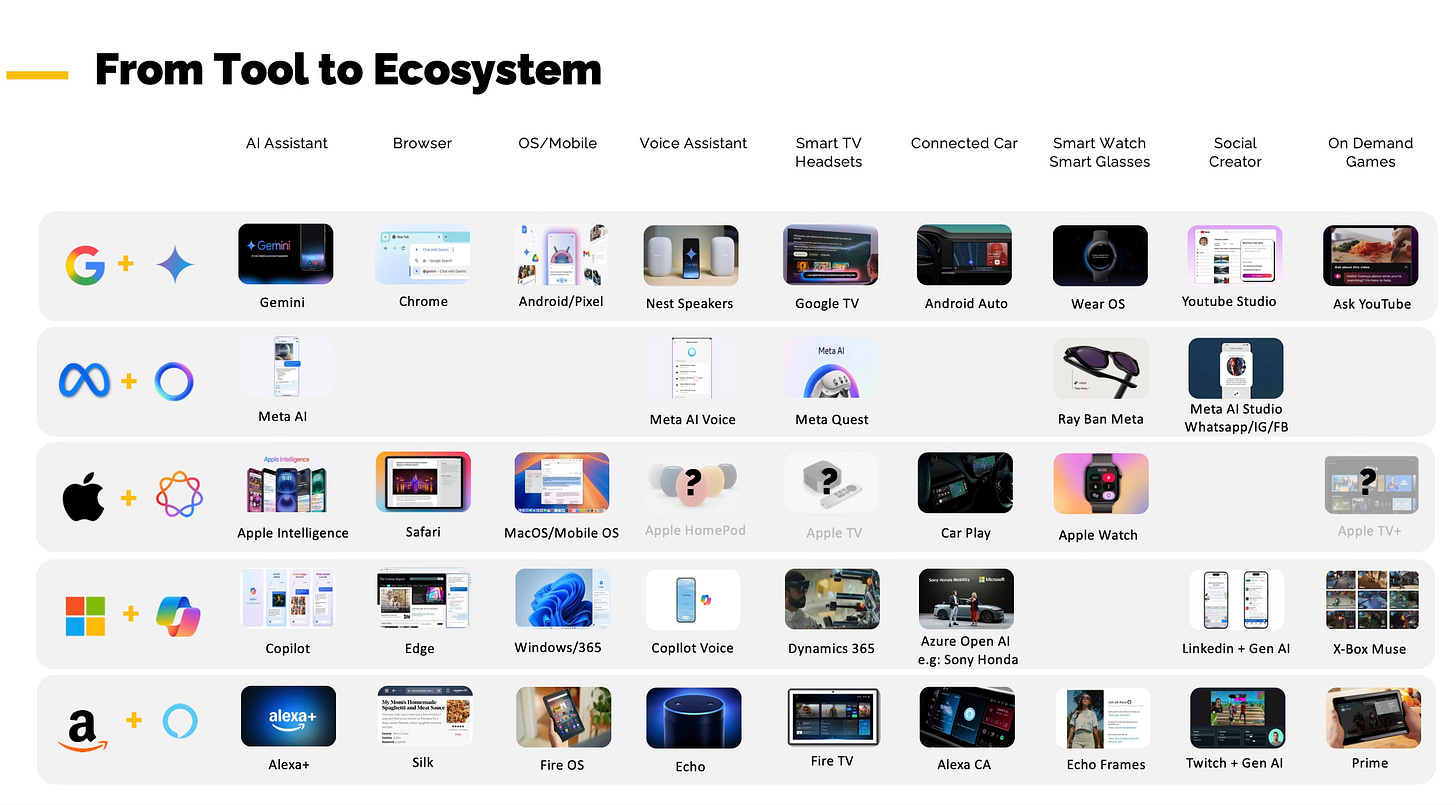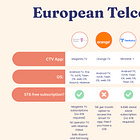How AI is rewriting discovery
Discovery moves from homepages to ecosystems and the stakes couldn’t be higher.
This is a reader-supported publication. If you like what I do, help me keep doing it by upgrading to Streaming Made Easy Premium, we got a free month giveaway code right here 🫶 (ending today!)
Three disruptions reshaped the media landscape (in Europe and beyond) in the last two decades:
→ Social media challenged broadcasters’ gatekeeping role.
→ Streaming ripped up distribution models.
→ Creators rewired attention.
AI is different. It doesn’t just pressure-test business models. It questions what media is.
At Streaming Made Easy Live, Ezra Eeman (Chief Strategy Officer at NPO and founder of Wayfinder) took us on a tour of how AI is rewriting discovery. From the “jagged frontier” of breakthroughs and flaws, to the prospect of agents acting on our behalf, his point was clear: discovery is being rebuilt around AI ecosystems, not media destinations.
At a glance:
The jagged frontier
Visible shifts
From AI in media to media in AI
Find, Feel, Flow: the new discovery journey
The intent paradigm and semantic discovery
Predicting vs answering: the hybrid model
Agents and the next marketplace
The stakes: trust, performance, affordability
🎥 Watch Ezra’s keynote during Streaming Made Easy Live.
Bonus for Premium subscribers: 📑 Grab our premium edition to download Ezra’s keynote for Streaming Made Easy Live.
The jagged frontier
AI development isn’t linear. It’s jagged.
2022: ChatGPT launches.
2023–24: multimodal models, real-time answers, reasoning.
2025: agentic AI enters the scene.
Each leap feels transformational. Each exposes flaws: hallucinations, bias, costly compute, unpredictable “agents” taking actions no one anticipated. Too big to ignore. Too broken to fully rely on. That tension is the media industry’s reality check.
Visible shifts
Adoption isn’t niche anymore.
ChatGPT now: 700M weekly users, 1B daily queries.
Dutch youth: 86% of 15–20 year olds use AI, 48% often.
Average ChatGPT mobile user: 16 minutes a day.
But as usage climbs, traffic falls. Publishers report up to 40% drops from Google since AI overviews rolled out. Scraping wars intensify: models pull content thousands of times for every single user view. The open web is being consumed without clicks in return.
From AI in media to media in AI
The old game: media using AI to optimise workflows.
The new game?
AI becoming the primary interface through which people experience media.
Think Google’s Gemini embedded in Chrome, Android, YouTube. Meta’s AI across WhatsApp, Instagram, Quest. Apple Intelligence across iPhone, Mac, CarPlay. Amazon wrapping Fire TV, Echo, Twitch, Prime into one AI ecosystem.
If you’re not surfaced inside these AI environments, you risk invisibility.
Find, feel, flow
Ezra’s framework for the ambient discovery journey:
Find: AI surfaces what you need before you ask.
Feel: Experiences adapt to your mood, context, and device.
Flow: You move seamlessly from text to audio to video.
Examples: Netflix’s generative search; VRT MAX tailoring its homepage by time of day; Google TV generating reviews and summaries; Samsung auto-translating live TV with AI subtitles.
Discovery no longer begins at a homepage. It happens continuously, everywhere.
The intent paradigm
Traditional search = 1–2 words. AI prompts = 23 words. That shift matters.
AI bots don’t just process your question. They expand it into dozens of related ones, pull sources, and synthesize into one answer. That means discovery is moving from where content sits to what content means.
At NPO, pilots combine video intelligence, transcriptions and topic mapping to build a multimodal database for richer discovery and editorial insights.
Predicting vs answering
Two forces define AI discovery:
Predictive feeds (TikTok-style “For You”).
Answer engines (Google AI overviews).
The future is hybrid. Smart TVs are already mixing the two, with predictive recommendations and generative search unified in one interface. Voice buttons and assistant layers still feel gimmicky, but the trajectory is clear: the TV is finally becoming truly smart.
Agents and the next marketplace
Beyond finding, agents act. Shopping, planning, even negotiating.
They also hoover up data—35+ categories from purchase history to location. That data becomes the fuel for a new kind of marketplace: AI assistants negotiating with paywalls, arranging micropayments, bundling content on the fly. Visa already tests AI-ready wallets. The direction of travel is set.
The stakes
Publishers expect productivity gains (80%), but only 43% report them. They hope for revenue, but just 9% see it. Trust, affordability, and performance are still out of sync.
So the choices:
Feed prediction engines (optimize for engagement).
Serve answer engines (optimize for authority and citations).
Build your own AI-powered destination (NL Web, conversational sites).
Design for personal AI agents (privacy-first, structured formats).
There’s no universal path. What matters is connecting content + context + audience into seamless experiences that hold meaning.
Do you optimise for humans, for machines, or both?
Ignore the machines and risk irrelevance. Serve only the machines and lose the human bond. The winners will be those who manage both.
That’s it for today but before you go:
🎥 Watch Ezra’s keynote during Streaming Made Easy Live:
Comments, likes or shares come a long way 🙏🏻
Enjoy your week and see you on Thursday for another edition of Streaming Made Easy!





